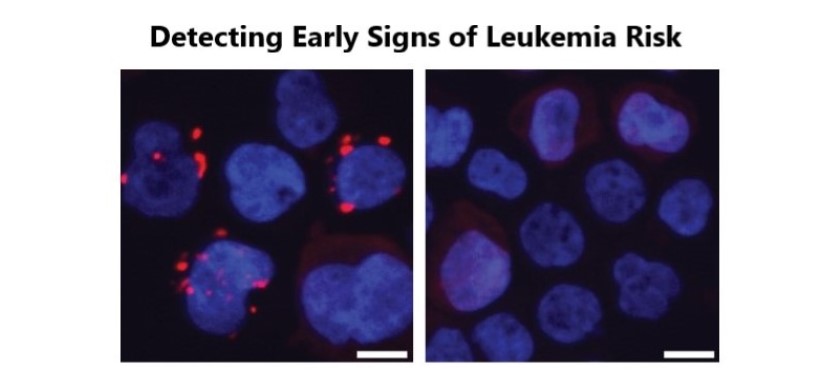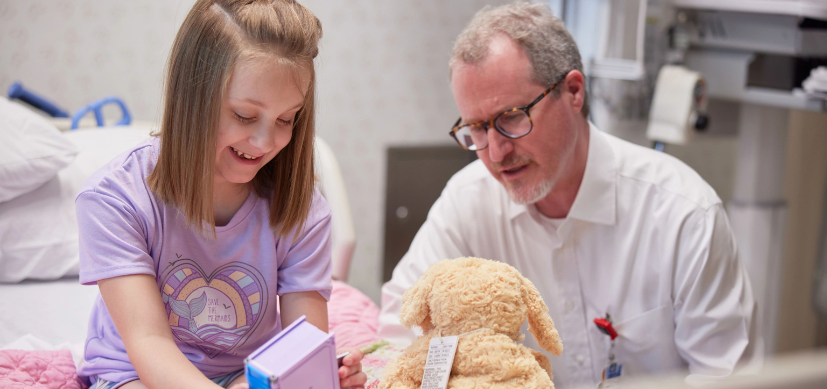Artificial Intelligence Assists Expanded Hunt for Cells Driving Eosinophilic Esophagitis
Research By: Marc Rothenberg, MD, PhD
Post Date: April 1, 2024 | Publish Date: Feb. 20, 2024

Scientists at Cincinnati Children’s tap into machine learning protocol to learn more about papillary mast cells, a potential reservoir of harmful cells seen in active EoE
Eosinophils and mast cells are two of several types of white blood cells that are part of our normally protective immune system. Patients with eosinophilic gastrointestinal diseases (EGIDs)–a group of severe food allergy-related conditions–have abnormally high levels of eosinophils and mast cells in their digestive tract tissues.
Eosinophils can promote excessive inflammation and tissue damage. Over the years, eosinophil counts have emerged as the key biomarker for tracking the severity of EGID. However, recent research has shown that reducing eosinophil levels in eosinophilic esophagitis (EoE)–the most common EGID–did not have therapeutic benefit.
These recent findings shifted attention to other cells, such as mast cells, that may contribute to EoE. Now, a study led by experts at Cincinnati Children’s–published in the Journal of Allergy and Clinical Immunology–reports using machine learning software to better characterize esophageal mast cells in EoE.
The study was led by first author Simin Zhang, MD, Division of Rheumatology, Allergy and Immunology at the University of Cincinnati College of Medicine, and senior author Marc Rothenberg, MD, PhD, director of the Cincinnati Center for Eosinophilic Disorders and the Division of Allergy and Immunology. The JACI journal also designated this study as an “Editor’s Choice.”
“We have developed a methodology for identifying, enumerating, and characterizing mast cells using artificial intelligence,” Rothenberg says. “This has been applied to decipher eosinophilic esophagitis and provides a platform approach for other diseases.”
Advanced process IDs distinct cell type of interest
Esophageal biopsy samples were stained for mast cells by anti-tryptase and imaged using immunofluorescence; high-resolution whole tissue images were digitally assembled.
Then the team trained the NIS.ai artificial intelligence software platform for microscopy (developed by Nikon Instruments Inc.) to identify, characterize and count the mast cells. The team named the new protocol Mast Cell-Artificial Intelligence (MC-AI).
In addition to enumerating cell counts with high accuracy, MC-AI helped the researchers identify a distinct population of homeostatic esophageal papillae mast cells. During active EoE, this population decreases, undergoes degranulation, negatively correlates with epithelial mast cell levels, and significantly correlates with distinct histologic features.
While more research is planned to determine the significance of these mast cells in contributing to EoE, the successful use of the AI tool may accelerate research in other disorders.
“Mast cells are implicated in many diseases, including eosinophilic esophagitis, anaphylaxis, hives, and even cancers. MC-AI can therefore be broadly applied to better understand the characteristics of this tissue-resident cell,” Zhang says.
About the study
Cincinnati Children’s co-authors in this study also included Julie Caldwell, PhD, and Mark Rochman, PhD, with the Division of Allergy and Immunology; and Margaret Collins, MD, Division of Pathology and Laboratory Medicine. The research also involved support from the Confocal Imaging Core and the Digestive Diseases Research Core Center at Cincinnati Children’s.
Funding sources included the National Institutes of Health (R01 AI045898 and R01 AI124355) and the Campaign Urging Research for Eosinophilic Diseases (CURED) Foundation.
Rothenberg is an inventor of patents owned by Cincinnati Children’s. He is a consultant with equity interests in Pulm One, Spoon Guru, ClostraBio, Serpin Pharm, Allakos, Celldex, Nexstone One, Santa Ana Bio, and EnZen Therapeutics. He is a consultant for Bristol Myers Squibb, Astra Zeneca, Pfizer, GlaxoSmith Kline, Regeneron/Sanofi, Revolo Biotherapeutics, and Guidepoint; and receives royalties from reslizumab (Teva Pharmaceuticals), PEESSv2 (Mapi Research Trust) and UpToDate.
Collins is a consultant for Allakos, Arena/Pfizer, AstraZeneca, Calypso Biotech, EsoCap Biotech, GlaxoSmithKline, Receptos/Celgene/BMS, Regeneron Pharmaceuticals, Robarts Clinical Trials Inc./Alimentiv, Inc. and Shire, a Takeda company; and has received license fees for use of the Eosinophilic Esophagitis Histology Scoring System.
| Original title: | Machine learning–based identification and characterization of mast cells in eosinophilic esophagitis |
| Published in: | Journal of Allergy and Clinical Immunology |
| Publish date: | Feb. 20, 2024 |
Research By

The Rothenberg CURED Research Laboratory, supported by the Campaign Urging Research for Eosinophilic Diseases (CURED), is focused on elucidating the mechanisms of allergic responses, especially in mucosal tissues such as the gastrointestinal tract and lung.







